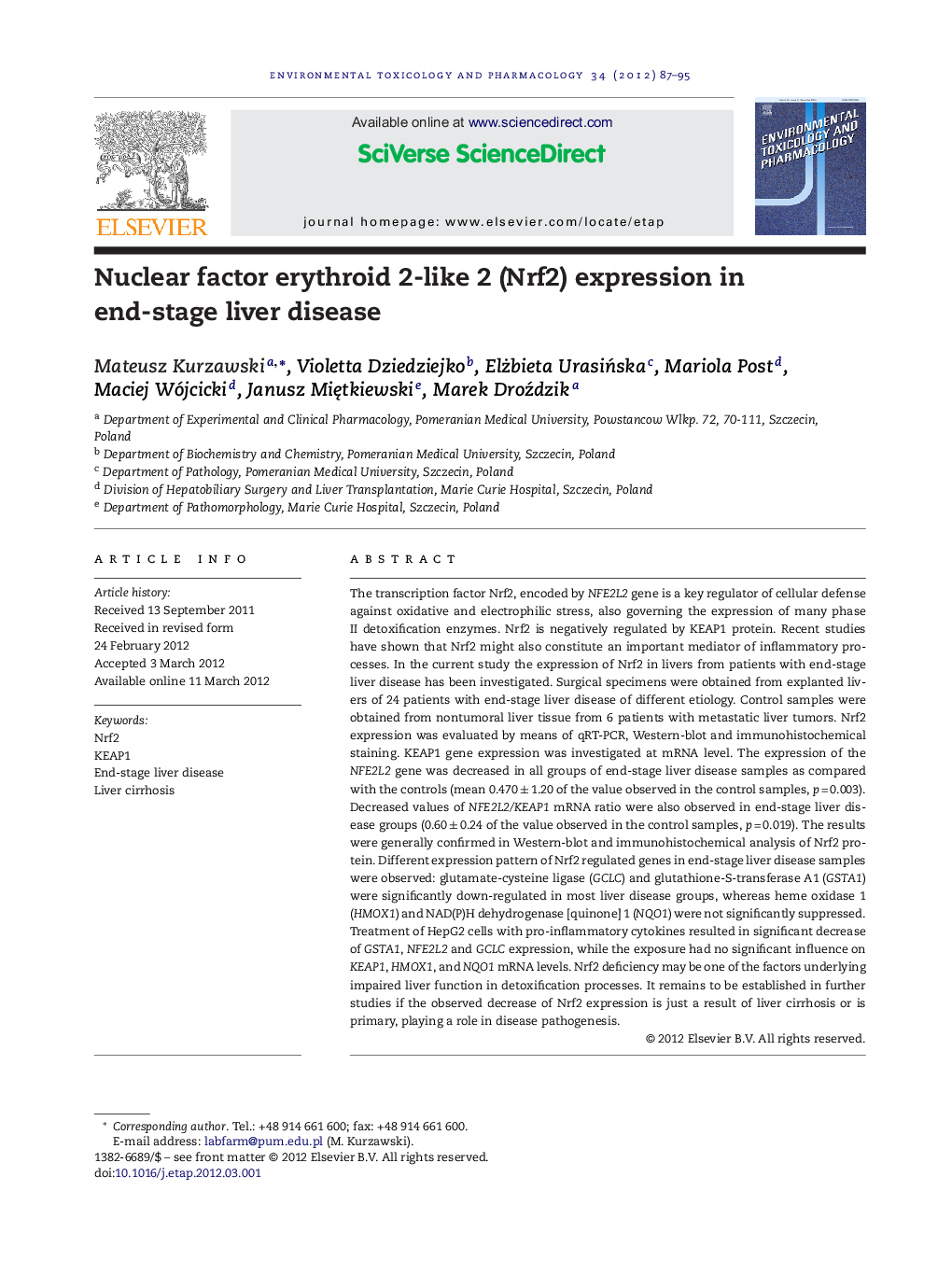| کد مقاله | کد نشریه | سال انتشار | مقاله انگلیسی | نسخه تمام متن |
|---|---|---|---|---|
| 2583585 | 1130695 | 2012 | 9 صفحه PDF | دانلود رایگان |

The transcription factor Nrf2, encoded by NFE2L2 gene is a key regulator of cellular defense against oxidative and electrophilic stress, also governing the expression of many phase II detoxification enzymes. Nrf2 is negatively regulated by KEAP1 protein. Recent studies have shown that Nrf2 might also constitute an important mediator of inflammatory processes. In the current study the expression of Nrf2 in livers from patients with end-stage liver disease has been investigated. Surgical specimens were obtained from explanted livers of 24 patients with end-stage liver disease of different etiology. Control samples were obtained from nontumoral liver tissue from 6 patients with metastatic liver tumors. Nrf2 expression was evaluated by means of qRT-PCR, Western-blot and immunohistochemical staining. KEAP1 gene expression was investigated at mRNA level. The expression of the NFE2L2 gene was decreased in all groups of end-stage liver disease samples as compared with the controls (mean 0.470 ± 1.20 of the value observed in the control samples, p = 0.003). Decreased values of NFE2L2/KEAP1 mRNA ratio were also observed in end-stage liver disease groups (0.60 ± 0.24 of the value observed in the control samples, p = 0.019). The results were generally confirmed in Western-blot and immunohistochemical analysis of Nrf2 protein. Different expression pattern of Nrf2 regulated genes in end-stage liver disease samples were observed: glutamate-cysteine ligase (GCLC) and glutathione-S-transferase A1 (GSTA1) were significantly down-regulated in most liver disease groups, whereas heme oxidase 1 (HMOX1) and NAD(P)H dehydrogenase [quinone] 1 (NQO1) were not significantly suppressed. Treatment of HepG2 cells with pro-inflammatory cytokines resulted in significant decrease of GSTA1, NFE2L2 and GCLC expression, while the exposure had no significant influence on KEAP1, HMOX1, and NQO1 mRNA levels. Nrf2 deficiency may be one of the factors underlying impaired liver function in detoxification processes. It remains to be established in further studies if the observed decrease of Nrf2 expression is just a result of liver cirrhosis or is primary, playing a role in disease pathogenesis.
► The expression of Nrf2 and its targets in end-stage liver disease was investigated.
► Expression of the Nrf2 is decreased in all groups of end-stage liver disease.
► Expression of Nrf2 targets, GCLC and GSTA1 is decreased end-stage liver disease.
► Nrf2 deficiency may underlie impaired liver function in detoxification processes.
► Nrf2 deficiency may play role in cirrhosis development.
Journal: Environmental Toxicology and Pharmacology - Volume 34, Issue 1, July 2012, Pages 87–95